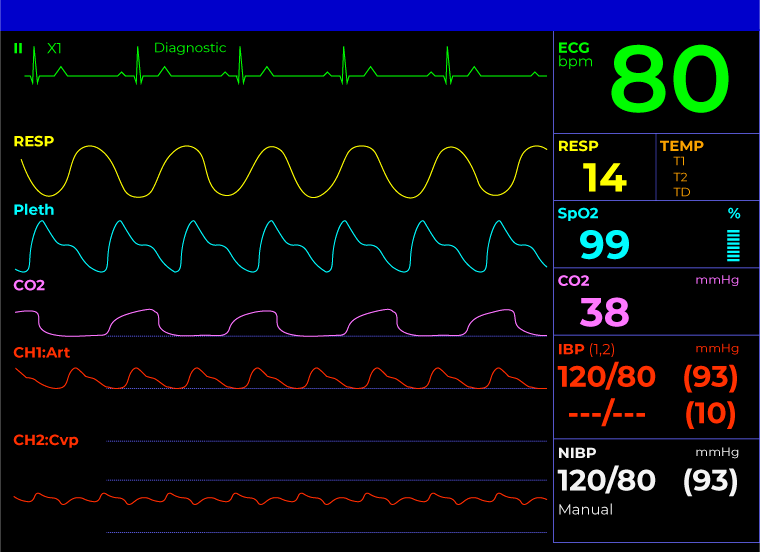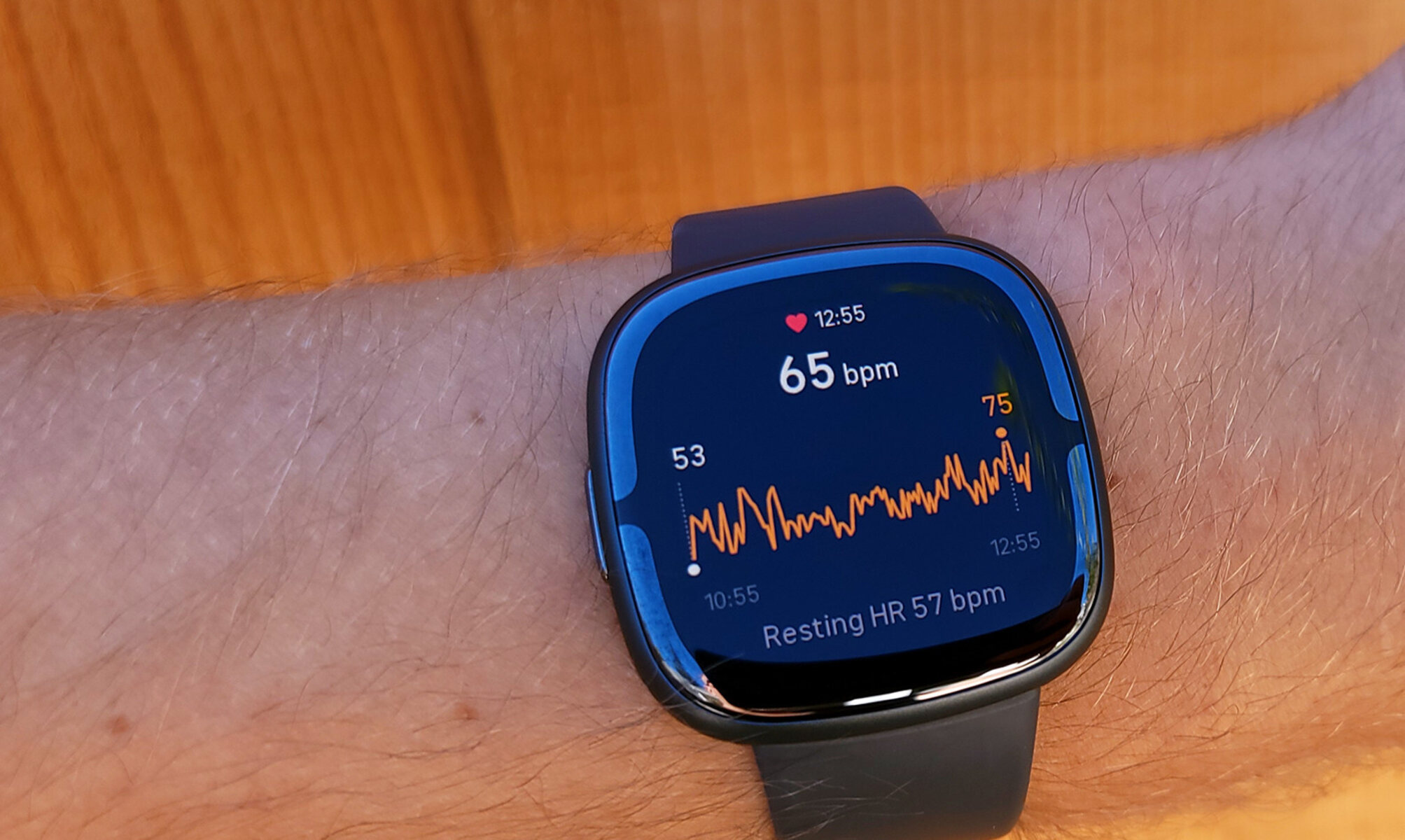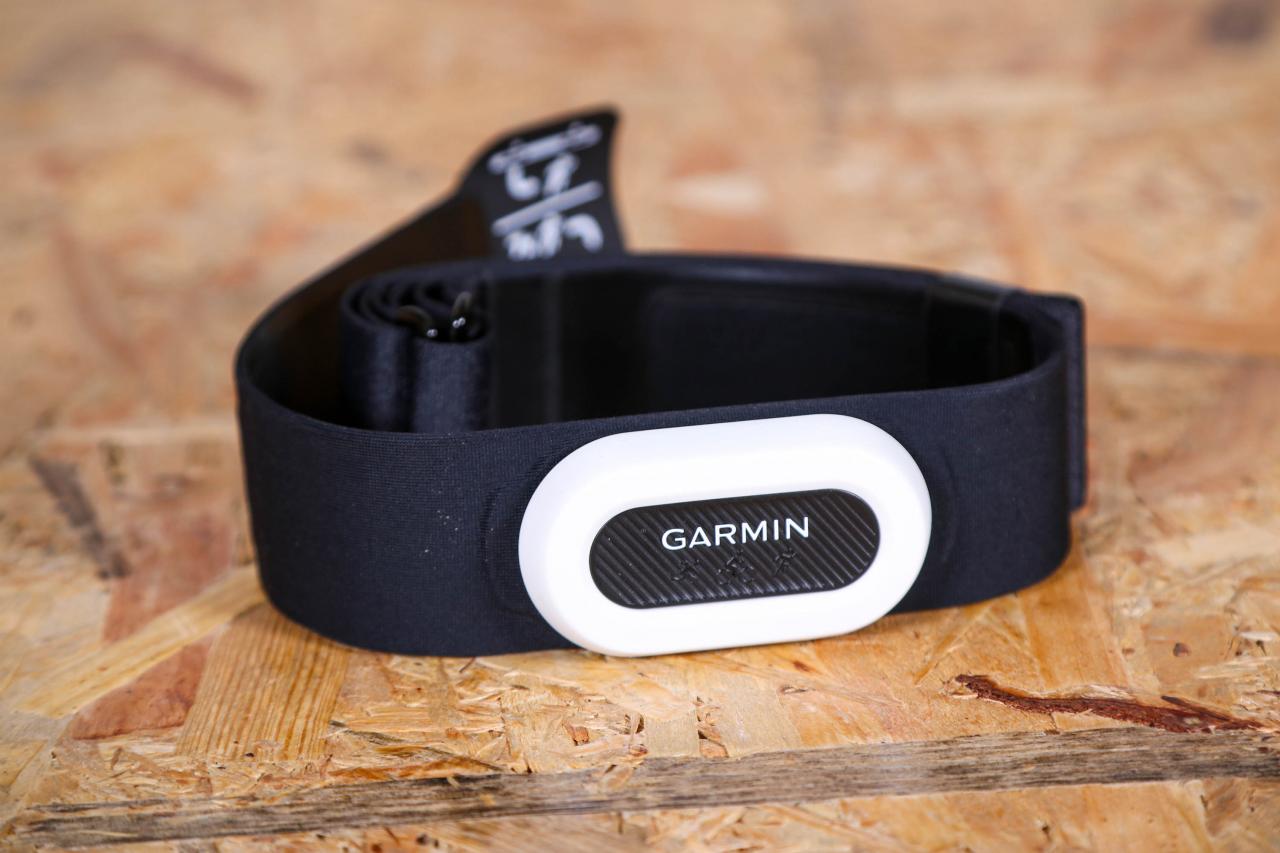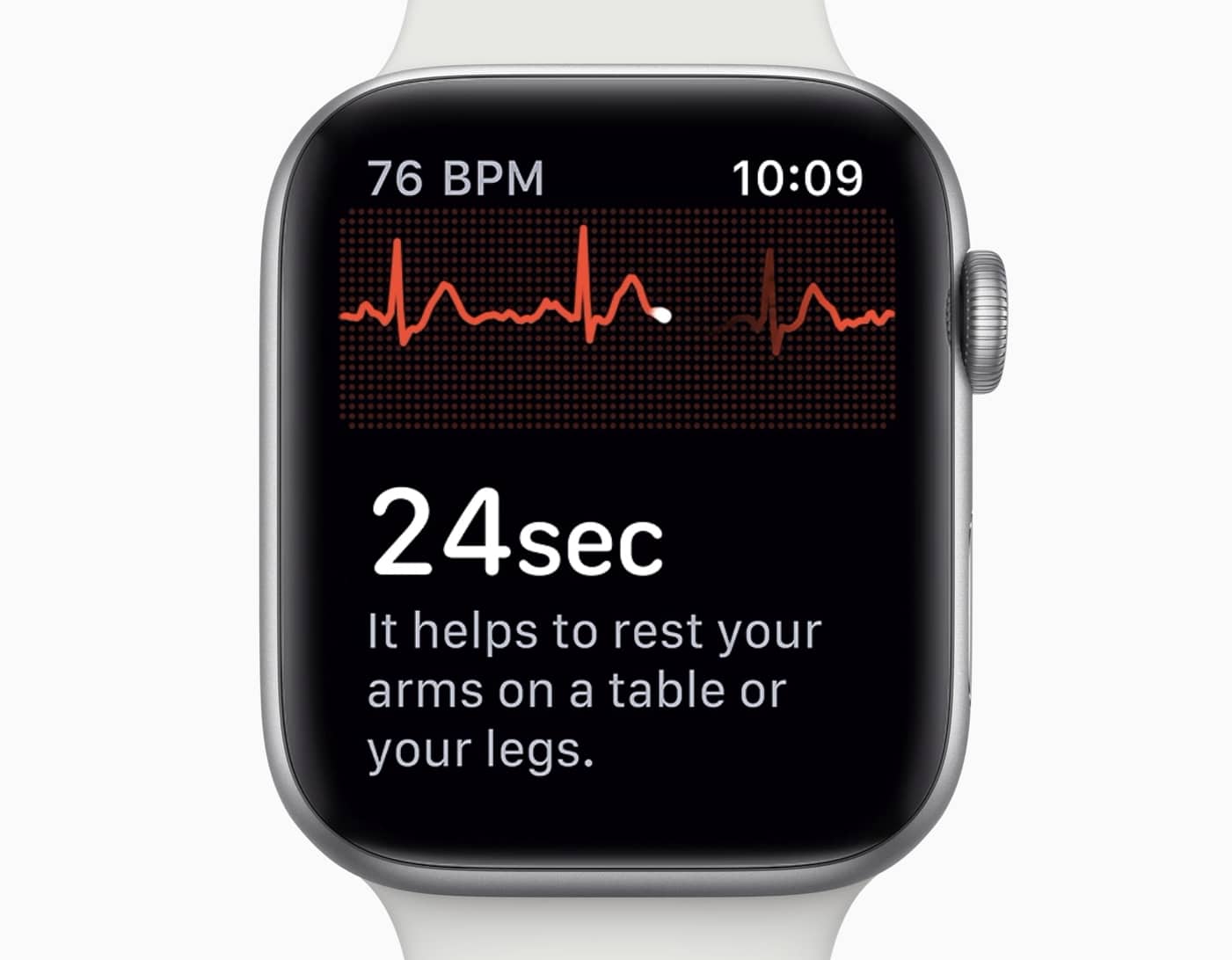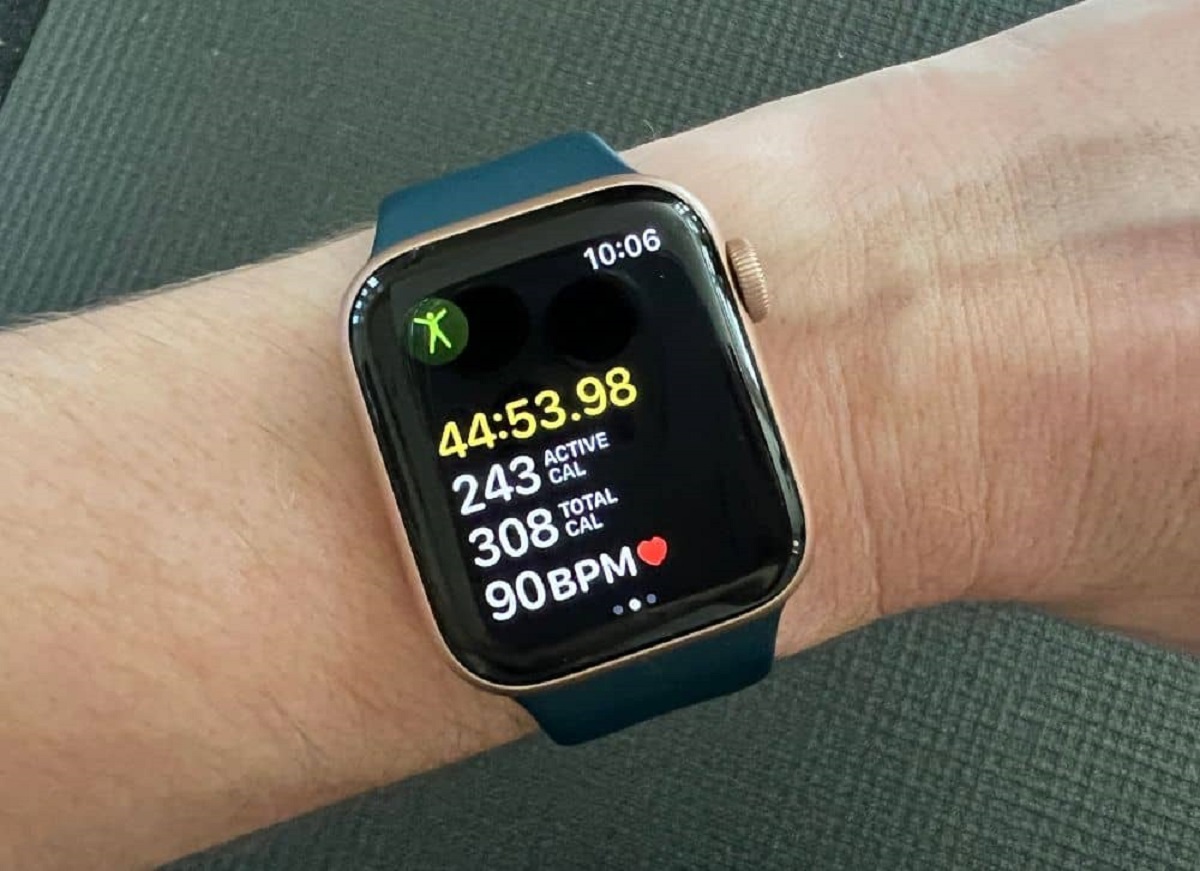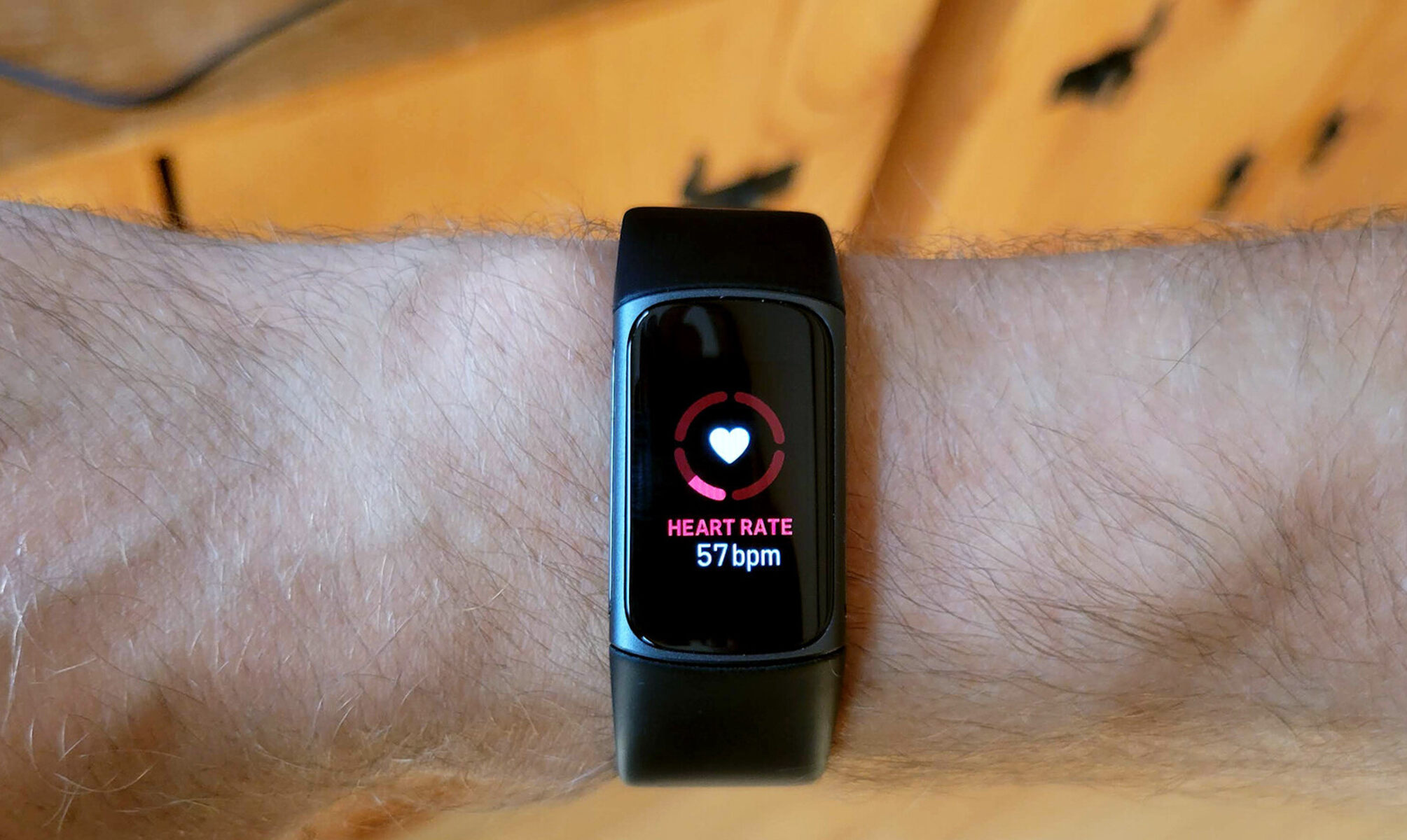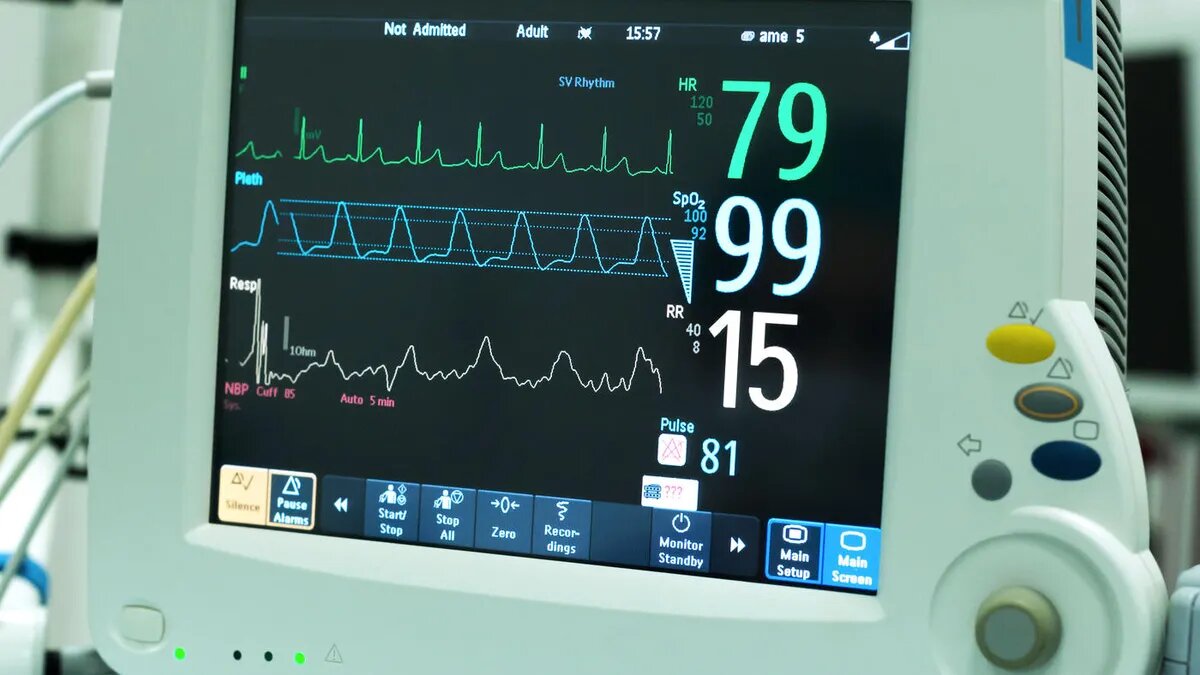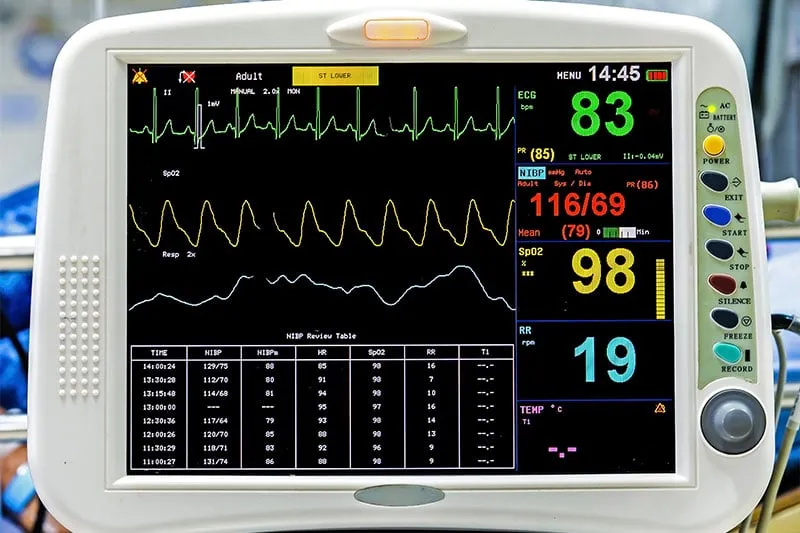What is a Heart Rate Monitor?
A heart rate monitor is a device that tracks and measures your heart rate in real-time. It is typically worn on the wrist, chest, or around the upper arm, and consists of a sensor that detects your pulse and a display that shows your heart rate.
The heart rate monitor works by using sensors to detect the electrical signals produced by your heart each time it contracts. These signals are then converted into a readable format and displayed as your heart rate. Heart rate monitors are commonly used by athletes, fitness enthusiasts, and individuals looking to monitor their cardiovascular health.
Heart rate monitoring can provide valuable insights into your exercise intensity, recovery rate, and overall fitness level. By tracking your heart rate, you can ensure that you are exercising in the appropriate heart rate zones to optimize your workouts and achieve your fitness goals.
In addition to tracking your heart rate during exercise, some heart rate monitors also offer features such as sleep monitoring, calorie tracking, and GPS tracking. This allows you to monitor your heart rate throughout the day and gather comprehensive data on your overall health and fitness.
Heart rate monitors come in a variety of styles and designs, from basic models with simple displays to more advanced models with advanced tracking capabilities and connectivity to smartphone apps. The choice of heart rate monitor will depend on your specific needs and preferences.
Overall, a heart rate monitor is an invaluable tool for anyone looking to improve their fitness, monitor their cardiovascular health, and optimize their workouts. By utilizing the data provided by a heart rate monitor, you can ensure that you are exercising safely and effectively, leading to better results and improved overall well-being.
Why Use a Heart Rate Monitor?
A heart rate monitor is not just a trendy gadget; it is a powerful tool that can revolutionize your fitness journey. Here are several reasons why you should consider using a heart rate monitor:
1. Accurate Fitness Tracking: A heart rate monitor provides precise and real-time data on your heart rate, allowing you to track your exercise intensity more accurately. This helps you stay within your target heart rate zones, ensuring that you are getting the most out of your workouts.
2. Personalized Training Zones: By knowing your heart rate zones, you can customize your training to match your fitness goals more effectively. Whether your goal is fat burning, endurance training, or improving cardiovascular fitness, a heart rate monitor helps you train in the right zone for optimal results.
3. Prevent Overtraining: Monitoring your heart rate during workouts can help you avoid overtraining. Overtraining can lead to decreased performance, increased risk of injury, and even burnout. A heart rate monitor provides real-time feedback, preventing you from pushing too hard and allowing for appropriate recovery.
4. Motivation and Accountability: Seeing your heart rate in real-time can be a great motivator during workouts. You can challenge yourself to reach certain heart rate targets and strive to improve your overall fitness. Additionally, a heart rate monitor can help you track your progress over time, providing a sense of accountability to stay consistent with your training.
5. Health Monitoring: Regularly monitoring your heart rate can provide insights into your cardiovascular health. Changes in resting heart rate or abnormal heart rate patterns during exercise may indicate potential health issues that need attention. This early detection can lead to timely medical intervention and prevention of more serious health complications.
6. Performance Optimization: For athletes and competitive individuals, a heart rate monitor is indispensable for optimizing performance. By analyzing heart rate data, you can identify strengths and weaknesses, adjust your training accordingly, and fine-tune your performance for peak results.
Overall, a heart rate monitor is a valuable tool for individuals of all fitness levels. It provides accurate data, personalized training guidance, and insights into your cardiovascular health. With a heart rate monitor, you can take your fitness journey to the next level and reach your goals more effectively and efficiently.
Types of Heart Rate Monitors
Heart rate monitors come in various types, each offering different features and functionalities. Here are the most common types of heart rate monitors available:
1. Chest Strap Heart Rate Monitors: These heart rate monitors consist of a chest strap that is worn around the chest and a receiver/watch that displays your heart rate. The chest strap contains sensors that detect your heart rate and wirelessly transmit the data to the receiver. Chest strap monitors are known for their accuracy and are commonly used by athletes and serious fitness enthusiasts.
2. Wrist-based Heart Rate Monitors: Wrist-based heart rate monitors are integrated into fitness trackers, smartwatches, and sports watches. They use optical sensors to detect your heart rate directly from your wrist. While wrist-based monitors may not be as accurate as chest strap monitors during high-intensity exercises, they offer convenience and are suitable for general fitness tracking.
3. Finger Sensor Heart Rate Monitors: These heart rate monitors are handheld devices that require you to place your finger or thumb on a sensor to measure your heart rate. While they are portable and easy to use, finger sensor monitors may not provide the same accuracy as chest strap or wrist-based monitors.
4. Ear Clip Heart Rate Monitors: These monitors clip onto your earlobe and use infrared sensors to measure your heart rate. Ear clip monitors are less common and may not be as accurate as other types of monitors.
5. Smartphone Apps: With the advancement in smartphone technology, there are now apps available that use the built-in sensors of your smartphone to measure heart rate. These apps require you to place your finger over the phone’s camera lens or use the phone’s flashlight to assess your heart rate. While convenient, they may not be as accurate as dedicated heart rate monitors.
6. Advanced GPS Heart Rate Monitors: These heart rate monitors not only track your heart rate but also include GPS functionality to measure distance, pace, and route. They are popular among runners, cyclists, and outdoor enthusiasts who require detailed performance data.
When choosing a heart rate monitor, consider factors such as accuracy, comfort, features, and compatibility with your fitness goals. It is important to select a monitor that suits your specific needs and preferences to make the most out of your heart rate monitoring experience.
Understanding Heart Rate Zones
Heart rate zones are a key concept when it comes to maximizing the effectiveness of your workouts. They are specific ranges of heart rate, expressed as a percentage of your maximum heart rate, that determine the intensity of your exercise. Here are the common heart rate zones and their significance:
1. Resting Heart Rate: This is the lowest heart rate you can achieve and typically occurs when you are completely at rest, such as when you wake up in the morning. Monitoring and tracking your resting heart rate over time can provide insights into your cardiovascular health and overall fitness level.
2. Zone 1 (Very Light – Warm-Up Zone): This zone is typically around 50-60% of your maximum heart rate. It is considered a very light intensity zone and is ideal for warm-up exercises, recovery workouts, or for beginners starting out with low-intensity exercise.
3. Zone 2 (Light – Fat Burning Zone): This zone is around 60-70% of your maximum heart rate. It is often referred to as the fat-burning zone as the body primarily uses fat as a fuel source during exercise in this range. This zone is suitable for longer, steady-state cardio workouts and building aerobic endurance.
4. Zone 3 (Moderate – Aerobic Zone): This zone is around 70-80% of your maximum heart rate. It is considered the aerobic zone, where your body uses a mix of fat and carbohydrates for energy. This zone is ideal for improving cardiovascular fitness, endurance training, and promoting overall health.
5. Zone 4 (Hard – Anaerobic Threshold Zone): This zone is around 80-90% of your maximum heart rate. It is the threshold at which your body begins to rely more heavily on carbohydrates for energy. Training in this zone improves lactate threshold, which increases the ability to sustain high-intensity exercise for longer durations.
6. Zone 5 (Maximum – Maximum Effort Zone): This zone is around 90-100% of your maximum heart rate. It represents maximum effort and is typically only sustainable for short bursts during high-intensity intervals or during all-out sprints. Training in this zone helps improve speed, power, and anaerobic capacity.
Understanding heart rate zones allows you to tailor your workouts to achieve specific fitness goals. Whether you’re aiming for fat burning, endurance training, or improving performance, training in the appropriate heart rate zone ensures that you are maximizing the benefits of your exercise and working at the right intensity for optimal results.
How to Measure Resting Heart Rate
Resting heart rate is an essential metric that provides insights into your cardiovascular health and fitness level. It represents the number of times your heart beats per minute when your body is at complete rest. Here are some simple steps to measure your resting heart rate:
1. Find a Quiet Environment: Choose a calm and quiet place where you can sit or lie down comfortably without any distractions. It is best to measure your resting heart rate in the morning after waking up, as it is typically at its lowest during this time.
2. Locate Your Pulse: Use your index and middle fingers to locate your pulse on your wrist, just below the base of your thumb, or on the side of your neck, just below your jawbone. Press lightly until you feel a gentle pulsating sensation.
3. Count the Beats: Once you’ve located your pulse, count the number of beats you feel within 60 seconds. Alternatively, you can count the beats for 30 seconds and multiply the number by two to get the beats per minute.
4. Use a Heart Rate Monitor: Another option is to use a heart rate monitor that can accurately measure your heart rate. Simply follow the instructions provided with the device to measure your resting heart rate. This method ensures precise and instant results.
5. Repeat for Accuracy: To ensure accuracy, it is recommended to measure your resting heart rate on multiple mornings and take the average. Resting heart rate can vary slightly from day to day, so averaging the measurements provides a more reliable value.
As you track your resting heart rate over time, you can observe any changes or trends. Generally, a lower resting heart rate indicates a healthier heart and better cardiovascular fitness. Factors such as age, fitness level, and overall health can influence your resting heart rate.
Remember that it is essential to consult with a healthcare professional if you notice any significant and persistent changes in your resting heart rate, as it could indicate an underlying medical condition.
Measuring your resting heart rate regularly can help you monitor your cardiovascular health, track the effectiveness of your fitness routine, and adjust your training as needed for optimal results.
How to Find Maximum Heart Rate
Knowing your maximum heart rate is crucial for effectively monitoring and adjusting the intensity of your workouts. It represents the highest number of times your heart can beat per minute during intense exercise. While there are several formulas to estimate your maximum heart rate, the most accurate method is to perform a maximum effort exercise test. Here’s what you can do to find your maximum heart rate:
1. Warm up: Begin with a light warm-up consisting of 5-10 minutes of low-intensity cardio exercise, such as brisk walking or cycling, to prepare your body for the test.
2. Choose the exercise: Select a form of exercise that allows you to reach your maximum output safely. Running, cycling, or using a rowing machine are common choices. Ensure that you are familiar and comfortable with the chosen exercise form.
3. Gradually increase intensity: Start the exercise at a moderate intensity and gradually increase the effort over time. This can be achieved by increasing the speed or resistance level of the exercise. Aim to reach your maximum effort within 10-15 minutes of the test.
4. Push yourself to the limit: During the exercise, give it your all and push yourself to the maximum level of exertion that you can sustain. Go as hard and fast as you can, focusing on maintaining proper form and technique.
5. Monitor your heart rate: Wear a heart rate monitor or use the heart rate sensors on exercise equipment to track your heart rate during the test. Ensure that you have a clear display of your heart rate in real-time to gauge your effort accurately.
6. Record the highest heart rate: Once you’ve reached your maximum effort, record the highest heart rate displayed during the test. This number signifies your estimated maximum heart rate.
It’s important to note that finding your maximum heart rate through an exercise test can be physically challenging and should only be done if you are in good health and have clearance from a healthcare professional. It is crucial to listen to your body and stop the test if you experience any chest pain, dizziness, or shortness of breath.
While the exercise test is the most accurate method, there are also formulas that estimate maximum heart rate based on age, such as subtracting your age from 220. However, these formulas provide average estimates and may not be as precise for individuals with different fitness levels.
Once you have determined your maximum heart rate, you can use it to calculate your heart rate zones and guide your exercise intensity for different goals, such as fat burning, endurance training, or high-intensity interval training.
How to Wear a Heart Rate Monitor
Wearing a heart rate monitor correctly is essential to ensure accurate and reliable heart rate readings during your workouts. Here are some guidelines on how to wear a heart rate monitor:
1. Choose the right type of heart rate monitor: Select a heart rate monitor that suits your activity type and personal preference. Options include chest strap monitors, wrist-based monitors, and finger sensor monitors. Consider factors such as comfort, accuracy, and ease of use.
2. Position the chest strap: If you are using a chest strap heart rate monitor, make sure it sits snugly against your chest, just below the breastbone. Adjust the strap so that it fits securely but not too tight, allowing for proper circulation and comfort.
3. Wet the electrodes (if applicable): Some chest strap heart rate monitors require moisture for optimal performance. Wet the electrodes on the strap with a small amount of water or a conductive gel before wearing it to ensure good contact with your skin.
4. Secure the chest strap: Attach the ends of the chest strap securely, ensuring that it stays in place during your workout. The strap should be snug but not overly tight, as this can affect both comfort and accuracy.
5. Position the wrist-based monitor: If you are using a wrist-based heart rate monitor, position it on your wrist, aligning it snugly but comfortably. The monitor should be in direct contact with your skin and fit securely to prevent movement during exercise.
6. Adjust the strap (if applicable): Some wrist-based monitors have adjustable straps. Make sure to adjust the strap to achieve a secure fit without restricting circulation or causing discomfort.
7. Check for proper contact: Before starting your workout, ensure that the heart rate monitor is picking up your heart rate correctly. Check for a steady and consistent heart rate reading on the display, indicating that there is proper contact between the sensors and your skin.
8. Follow manufacturer’s instructions: Always refer to the specific instructions provided by the manufacturer of your heart rate monitor. They may have additional guidelines or recommendations on how to properly wear and care for their particular device.
It’s important to note that different heart rate monitors may have varying instructions for wearing and positioning. Always refer to the user manual or guidelines provided with your specific device to ensure accurate measurements and optimal performance.
By wearing your heart rate monitor correctly, you can track and analyze your heart rate data more effectively, helping you train at the right intensity and achieve your fitness goals more efficiently.
Interpreting Heart Rate Data
Interpreting heart rate data from your heart rate monitor can provide valuable insights into your fitness level, performance, and overall cardiovascular health. Here are some key factors to consider when analyzing your heart rate data:
1. Resting Heart Rate: Your resting heart rate is the baseline measurement of your heart rate taken when you are at complete rest. Lower resting heart rates generally indicate better cardiovascular fitness. Monitoring changes in resting heart rate over time can help assess improvements in your fitness level.
2. Exercise Intensity: When you exercise, your heart rate increases to meet the increased demand for oxygen and energy. Monitoring your heart rate during workouts can help you determine if you are exercising at the desired intensity, whether it is within a specific heart rate zone or reaching your maximum heart rate during high-intensity intervals.
3. Recovery Rate: Tracking how quickly your heart rate returns to normal after exercise can indicate your cardiovascular fitness level and how efficiently your body recovers. A faster recovery rate suggests better overall fitness and cardiovascular health.
4. Variability in Heart Rate: Heart rate variability refers to the variations in the time interval between consecutive heartbeats. A higher heart rate variability indicates a healthier cardiovascular system, as it reflects the ability of the heart to adapt to changing conditions and stressors. Monitoring heart rate variability can be particularly useful for athletes and individuals looking to optimize their performance.
5. Long-term Trends: Analyzing heart rate data over an extended period can reveal patterns and trends. You can identify if your heart rate is consistently within the desired heart rate zones for your fitness goals or if improvements or adjustments are needed. Long-term trends can also help identify potential health issues or changes in cardiovascular health.
6. Context and Individual Differences: It’s important to consider individual differences and individual context when interpreting heart rate data. Factors such as age, fitness level, medication, stress levels, and overall health can impact heart rate. It’s essential to have a baseline understanding of your own body and consult with healthcare professionals if you have concerns or questions regarding your heart rate data.
Keep in mind that heart rate data is just one aspect of monitoring your fitness and health. It provides valuable information, but it should be assessed in conjunction with other metrics such as perceived exertion, training history, and overall well-being to form a comprehensive understanding of your body’s response to exercise and stress.
By interpreting heart rate data accurately, you can make informed decisions regarding your training intensity, recovery strategies, and overall fitness and health goals.
What to Look for in a Heart Rate Monitor
When choosing a heart rate monitor, there are several key factors to consider to ensure you find the right one that suits your needs and goals. Here are some important features to look for when selecting a heart rate monitor:
1. Accuracy: Accuracy is crucial for obtaining reliable heart rate data. Look for a heart rate monitor that has proven accuracy through user reviews and reputable testing. Chest strap heart rate monitors are often considered the most accurate, while wrist-based monitors can vary in accuracy depending on the brand and model.
2. Comfort and Fit: The heart rate monitor should fit properly and feel comfortable during exercise. Chest strap monitors should have adjustable straps that allow for a snug fit without being overly tight. Wrist-based monitors should have a secure and comfortable fit on your wrist without cause discomfort or hindering your movement.
3. Battery Life: Consider the battery life of the heart rate monitor. Longer battery life means less frequent charging or battery replacement, which is particularly important for endurance athletes or individuals engaged in long workouts or outdoor activities where access to charging may be limited.
4. Connectivity and Compatibility: Check if the heart rate monitor is compatible with the devices and apps you plan to use. Some heart rate monitors can sync seamlessly with fitness apps, smartphones, or GPS watches, allowing you to track and analyze your heart rate data conveniently.
5. User-friendly Interface: Look for a heart rate monitor with an intuitive and easy-to-use interface. Clear and easily readable displays or indicators, as well as accessible buttons or controls, can enhance your overall user experience and make it simpler to navigate the device during workouts.
6. Additional Features: Consider any additional features that may be important to you. These could include built-in GPS, water-resistance for swimming or water-based activities, calorie tracking, sleep tracking, or the ability to customize heart rate zones or receive real-time feedback during workouts.
7. Price: Set a budget that aligns with your needs and expectations. Heart rate monitors range in price, so it’s important to find one that provides the features and functionality you require without breaking the bank.
8. Reviews and Recommendations: Read reviews and seek recommendations from reliable sources or other users who have experience with the heart rate monitors you are considering. This can provide valuable insights into the performance, durability, and overall satisfaction with the monitor.
Remember that the best heart rate monitor ultimately depends on your personal preferences, goals, and intended use. Take the time to research and compare different options to find the heart rate monitor that suits your needs and will assist you in achieving your fitness goals effectively.







